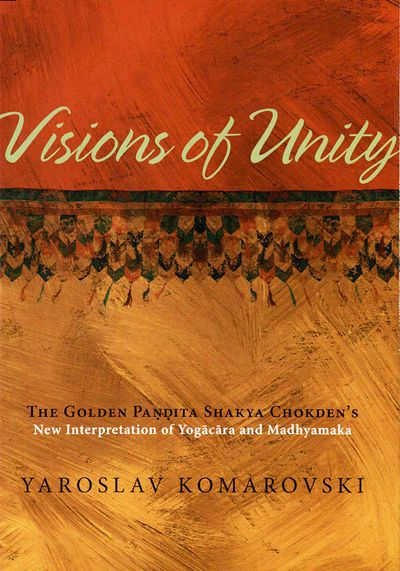Visions of Unity
< Books
| Line 29: | Line 29: | ||
***{{i|''Topical Divisions of Shakya Chokden's Works Addressed in This Book'' |59 }} | ***{{i|''Topical Divisions of Shakya Chokden's Works Addressed in This Book'' |59 }} | ||
| − | *{{i|Chapter Two: The Intellectual Background of Shakya Chokden's Interpretation of Yogācāra and Madhyamaka |71 }} | + | *{{i|Chapter Two: The Intellectual Background<br>of Shakya Chokden's Interpretation of Yogācāra and Madhyamaka |71 }} |
**{{i|1. Two Tendencies in Yogācāra and Niḥsvabhāvavāda Writings |71 }} | **{{i|1. Two Tendencies in Yogācāra and Niḥsvabhāvavāda Writings |71 }} | ||
**{{i|2. Basic Elements of Shakya Chokden's Approach to Mahāyāna Systems |84 }} | **{{i|2. Basic Elements of Shakya Chokden's Approach to Mahāyāna Systems |84 }} | ||
| Line 37: | Line 37: | ||
*{{i|Chapter Three: Readjusting Rungs of the Ladder: Revisiting Doxographical Hierarchies| 109 }} | *{{i|Chapter Three: Readjusting Rungs of the Ladder: Revisiting Doxographical Hierarchies| 109 }} | ||
**{{i|1. Key Features of Shakya Chokden's Approach to the Buddhist Tenets |109 }} | **{{i|1. Key Features of Shakya Chokden's Approach to the Buddhist Tenets |109 }} | ||
| − | **{{i|2. Demarcating the Middle: On the Valid Divisions of Madhyamaka and Great Madhyamaka |116 }} | + | **{{i|2. Demarcating the Middle: On the Valid Divisions of Madhyamaka and<br>Great Madhyamaka |116 }} |
**{{i|3. Self-Emptiness and Other-Emptiness |122 }} | **{{i|3. Self-Emptiness and Other-Emptiness |122 }} | ||
***{{i|''Self-Emptiness'' |124 }} | ***{{i|''Self-Emptiness'' |124 }} | ||
Revision as of 16:59, 3 August 2020
A detailed study of controversial Tibetan Buddhist thinker Śākya Chokden, a fifteenth-century Sakya philosopher who wrote extensively on Yogācāra and Madhyamaka in an attempt to synthesize the two, this book presents Yaroslav Komarovski's dissertation research. Komarovski skillfully places Śākya Chokden in a long history of Yogācāra-Madhyamaka syntheses, a tradition that Śākya Chokden accused Tsongkhapa of abandoning in his radical interpretation of Candrakīrti and rejection of all positive-language doctrine. Although his writings were recognized for their brilliance, his criticisms of Tsongkhapa and Sakya Paṇḍita, and his qualified acceptance of "other-emptiness" (gzhan stong), meant that he was almost entirely rejected by his peers. In dense but readable prose Komarovski explains how Śākya Chokden reclassified elements of each (the Satyākāravāda doctrine of the Yogācāra, and the Prasaṅgika branch of the Madhyamaka) as true Madhyamaka; each was capable of bringing people to a realization of the ultimate, one with positive language and the other with negative.
| Citation | Komarovski, Yaroslav. Visions of Unity: The Golden Paṇḍita Shakya Chokden's New Interpretation of Yogācāra and Madhyamaka. Albany: State University of New York Press, 2011. |
|---|---|


